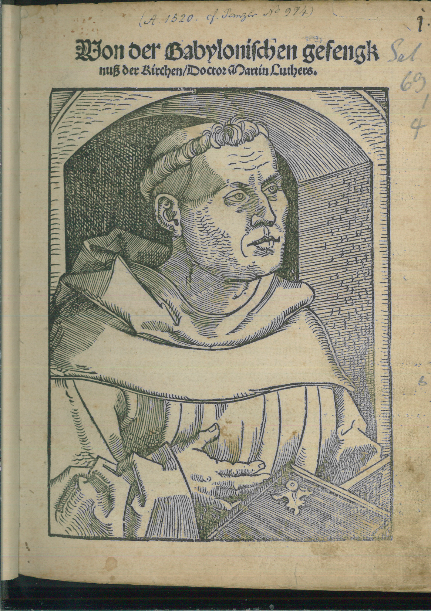This article was originally posted on the Taylor Reformation blog which has now become part of the Taylor Editions website with a dedicated Reformation Pamphlets series.

Von der Babylonischen Gefengknuss der Kirchen.
Martin Luther Johann Schott.
[Strasburg] : [J. Schott] ;[ca. 1520]
One can hardly overestimate the European, and eventually worldwide impact of the German reformation; it was an intellectual, political, and social movement that affected anyone who witnessed it, from the most eminent historical figures to the most ephemeral everymen.
It is particular to this movement that it is contemporary to other historical movements that have proven to be as epochal and world-changing as itself. Among these movements is the technical revolution of the invention of printing. It is difficult to tell how much the reformation might have been enabled, sustained, and accelerated by this innovation. However, it is possible to show to what extent Protestant Reformers understood and exploited the opportunities it offered.
The two treasures of the Taylorian here exhibited prove that Reformers were eager to employ the broad formal inventory of early printing to address their publications to a bigger and more disparate audience. They reprinted Martin Luther’s ground-breaking pamphlet De captivitate babylonica, where he furiously attacks the papal doctrine of sacraments, in a vernacular edition; its font was changed, it was given a more visible structure through bigger headings, and amplified by two impressive woodcuts.
It did reach a disparate audience. Reading the handwritten marginalia so beautifully conserved in these two prints, we can follow readers who are very different from each other indeed. The German print was read by a seemingly hasty reader, who took rare and lazy notes, in German. The Latin print was annotated in Latin by three different readers, who shared a zealous interest, an educated accuracy, and a comprehensive attention to detail.
Lucas Eigel,
Somerville College, Oxford
